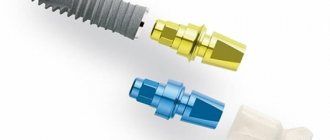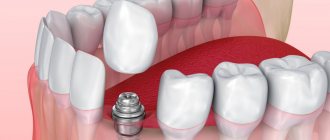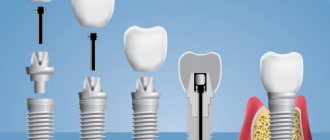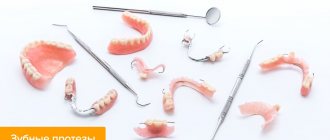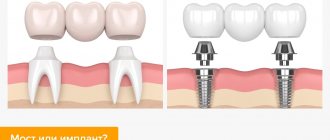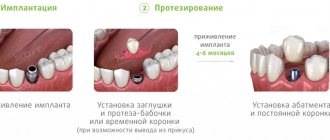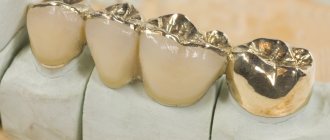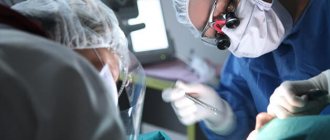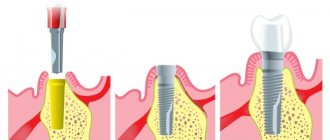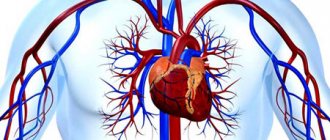Please note that the introduction of the contraceptive Implanon can only be done in the clinic at Krasnopresnenskaya metro station at the address: Moscow, Volkov lane, 21, phone +7 (495) 151-29-71 (ext. 2)
Injection contraception is one of the safest methods of preventing unplanned pregnancy, which consists of administering a drug. In this case, there is no disruption of the cycle or disruption of the hormonal levels of the female body. One of the most modern injectable contraceptives is the subcutaneous contraceptive Implanon.
Action of Implanon
To find out whether using Implanon for pregnancy protection is right for you, you can consult an obstetrician-gynecologist at the Zdorovye medical center network. Implanon is injected under the skin in the upper third of the shoulder exclusively by a medical specialist who knows this technique. The implant is a thin elastic silicone rod, the size of which is 4 cm in length and 2 mm in diameter, so after installation it is almost invisible. In this way, a woman can maintain the confidentiality of her contraceptive use.
Implanon's action is aimed at preventing the growth and release of eggs from the ovaries, thickening the cervical mucus and impeding the passage of sperm. Hormones constantly and continuously enter a woman’s body, so the effectiveness of the drug in preventing pregnancy is 99%.
The Implanon implant has virtually no effect on lactation, which is why many women decide to use it after childbirth. The drug can be administered 4–5 weeks after the birth of the baby.
Is it possible for an implant to migrate throughout the body?
If installed correctly, the contraceptive cannot easily move around the body from its place. There have been isolated cases where the implant migrated up to 2 cm from the original site if it was not placed deep enough.
Although this type of contraceptive is suitable for use by most women, there are still some contraindications, according to the criteria of the World Health Organization. Among them:
- the presence of arterial or venous thrombosis;
- hormone-dependent neoplasms of a malignant nature (for example, in the mammary glands or organs of the reproductive system);
- severe liver disease;
- vaginal bleeding of unknown origin;
- hypersensitivity to Implanon® components.
Implanon: implant installation
To install Implanon, you must consult a doctor, since this process is a minor surgical operation. Implanon is installed on the inner surface of the shoulder of the arm that is less involved in a woman’s daily life (for a right-handed person, the implant is installed in the left arm, for a left-handed person, vice versa).
Before installing Implanon, the surgical field is treated with antiseptics, the doctor makes a mark at the place where Implanon will be administered. After this, local anesthesia is performed, the doctor makes a miniature incision and inserts the implant. The incision is fixed with one suture, which is removed after 7–10 days.
Breast reconstruction: the story of one victory
What does a woman experience who has survived breast cancer, amputation, long and difficult treatment, and emerged victorious from this situation? Only she knows this, but the fact that a mastectomy is not a reason to put an end to future life is beyond doubt. And a real case from practice will help you verify this.
The patient was diagnosed with stage 3 breast cancer at the age of 38. One day, in the shower, she simply felt a lump in her chest, turned to a therapist, and he advised her to go to an oncology clinic and undergo an examination.
Several tumor foci were identified. Then there was a long and tedious treatment, 6 months of chemotherapy and a radical mastectomy. Since the disease was diagnosed at a late stage, a large amount of tissue had to be removed and the mammary gland had to be completely removed. But we managed to save all the skin and nipple.
Thanks to this, during reconstructive surgery there was no need to stretch the skin and install temporary expanders. We were able to immediately proceed to installing the implant, avoiding additional surgical intervention.
An anatomical implant was chosen for the operation because it closely matches the shape of the natural breast.
An incision was made in the area of the submammary fold and an implant was installed. The reconstructed breast turned out to be larger in volume than the healthy one, so it was decided to perform a symmetrizing operation. An endoprosthesis was installed in the second breast and the skin was tightened.
Advantages of the method
Injection contraception allows you to minimize the risk of unwanted pregnancy; this method does not have the side effects that oral contraceptives have (liver damage). In addition, the implant does not require complex care and all you need to do is visit a gynecologist every 6 months.
The method provides a reliable contraceptive effect for 3 years and can be stopped at any time at the woman’s request - the implant is removed in 10 minutes by a doctor and pregnancy can occur within a month.
Indications and preparation for implantation
The main indication for inserting an implant is the woman’s reluctance to become pregnant at the moment. Also, its use may be indicated in the late reproductive period, if there are contraindications for taking COCs containing estrogen, in combination with the treatment of certain hormone-dependent diseases.
Before inserting the implant, the doctor prescribes an examination, which includes:
- tests to exclude pregnancy;
- tests to exclude individual intolerance to the components of the drug;
- ultrasound examination of the pelvis;
- examination of a smear of vaginal discharge;
- exclusion of other possible contraindications.
Only a doctor in a clinic should insert an implant in compliance with antiseptic rules. The procedure is prescribed on a specific day of the menstrual cycle. After childbirth or medical abortion, contraception can be installed after six to eight weeks. The implant is inserted into the subcutaneous fat through a small incision or puncture. The injection site is the inner side of the shoulder. The contraceptive effect of the drug begins almost immediately after administration.
What is important to know when using Implanon:
- The main side effect is a change in the nature of bleeding. In most cases, menstrual flow may be light or temporarily absent. In very rare cases, heavy bleeding occurs
- Taking certain medications or herbal preparations may reduce the effectiveness of Implanon, in which case additional contraception may be required.
- If a woman changes her mind and wants to have a child, the effect of Implanon is reversible within a month after removal
To remove the implant, it is enough to make an incision on the skin of no more than 2 mm, however, the removal procedure can only be entrusted to a gynecologist in a specialized medical clinic.
Important information about contraceptive implants:
- the effectiveness of contraceptive implants reaches 99%;
- implants have a long validity period - from three to five years;
- after removing the contraceptive implant, the reproductive functions of the woman’s body are restored almost immediately;
- After installation of the implant, changes in the menstrual cycle may occur. Menstruation may become irregular, less or more heavy. Some women experience amenorrhea for several months;
- some medications can reduce the effectiveness of the implant, so if you are taking any medications, be sure to tell your doctor about it;
- A contraceptive implant cannot protect against sexually transmitted diseases.
How does the procedure work?
On average, the duration of the procedure is 40-60 minutes. Since the procedure has a list of contraindications, the skin is carefully examined by a cosmetologist first. The filler and the method of its administration are selected based on the individual characteristics of the body. The substance is injected using a thin needle. The injection area is usually treated with a special cream that acts as a local anesthetic.
In rare cases, hematomas form at the injection site. They usually go away on their own, but you can also use a special ointment to improve the condition. In addition, after the procedure, redness and swelling may appear, and the patient may experience a feeling of fullness. Usually these symptoms are short-lived and go away on their own after some time. The effect of introducing fillers is noticeable immediately. The obtained result lasts for 6-12 months, in rare cases – up to 18 months.
Contraindications to the injection of fillers and installation of implants are identical. Surgery is not used during pregnancy and breastfeeding. Also, plastic surgery will need to be refused in case of epilepsy, oncology, a tendency to form keloid scars, blood clotting disorders and in the presence of inflammatory processes in the intervention area.
Fillers - pros and cons
You can correct the shape of your face by using special filler substances called fillers. The main advantage of this method of correcting aesthetic defects is its minimal invasiveness. They are injected into the skin and effectively smooth out wrinkles and folds, correct the shape of the face and restore volumes that have been lost with age.
In most cases, fillers are composed of hyaluronic acid. This substance is not rejected by the body, as it is originally contained in human skin. Injections of hyaluronic acid can solve a number of aesthetic problems, namely:
- irregular chin shape;
- thin lips and their unclear outline;
- insufficient fullness of the cheekbones;
- pronounced nasolabial folds;
- creases between the eyebrows;
- sunken cheeks;
- horizontal wrinkles on the forehead;
- lip asymmetry;
- expression lines around the eyes and mouth;
- acne marks.
Hyaluronic acid gives your skin a fresher, more youthful appearance. Due to the binding of water molecules and neutralization of free radicals, the skin becomes hydrated and looks much better. The administration of the drug increases the access of oxygen to cells and stimulates the production of elastin and collagen. Thanks to this, the face is lifted, even deep wrinkles and folds are smoothed out, and the skin texture is evened out.
How is breast reconstruction performed?
Delayed reconstruction is performed using different methods: using the patient's fat tissue graft, tissue flaps taken from the back, abdomen or buttocks. But the optimal result is demonstrated by breast reconstruction using implants.
In this case, the traumatism of the operation is minimized and the reconstruction itself is greatly simplified. Plus, there are no stitches or scars on other parts of the body, since donor material is not required - it is replaced by a breast implant; after a mastectomy, this is the simplest, most effective and safest way to restore attractiveness and a healthy appearance to the breasts.
The surgical technique is selected individually, taking into account the characteristics of the patient, medical history, type of mastectomy and other factors.
If there is not enough skin volume to install the endoprosthesis, or it has been completely removed along with the glands, a two-stage reconstruction is performed:
- At the first stage, consultation and selection of an implant is carried out;
- Based on the results of the examination and analysis, the surgical technique and type of anesthesia are prescribed;
- markings are made on the skin;
- an incision is made in the selected area;
- to restore skin area, an expander (temporary implant) is installed under the pectoralis major muscle and filled with saline;
- over the next few weeks, an additional volume of saline is pumped into the implant so that it gradually increases in size;
- as a result, the expander puts pressure on the pectoral muscle and stimulates skin stretching, thereby forming a pocket for the endoprosthesis;
- after a few months, if there are no complications, they move on to the second stage - the expander is encapsulated and a permanent silicone implant is installed in its place;
- This is followed by a period of rehabilitation, removal of stitches and recovery.
The situation with cancer patients is complicated by the fact that tissues heal poorly after radiation therapy and are susceptible to infections and inflammation. The body itself is weakened by disease and therapy.
During a mastectomy, not only soft tissue and lymph nodes are removed, but also blood vessels that provide vitality to tissue and skin. This significantly complicates the implantation process, and the installed prosthesis finds itself in difficult conditions.
In the future, this can provoke complications, pathologies, including rejection of the endoprosthesis, and also prolong the rehabilitation period.
Delayed reconstructive surgery has no time limits and can be performed after several months or after several years.
One-stage breast reconstruction
Single-stage breast reconstruction is performed simultaneously with a mastectomy and can reduce the level of injury, pain, discomfort and scarring, since instead of two operations only one is performed.
Simultaneous reconstruction is possible in cases where the mammary glands are subject to amputation, but the skin membrane remains intact. In this case, the damaged tissue is removed and an implant is placed under the pectoral muscle.
